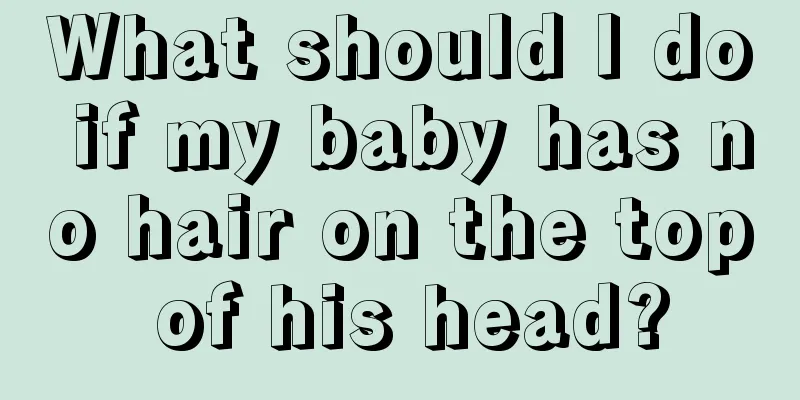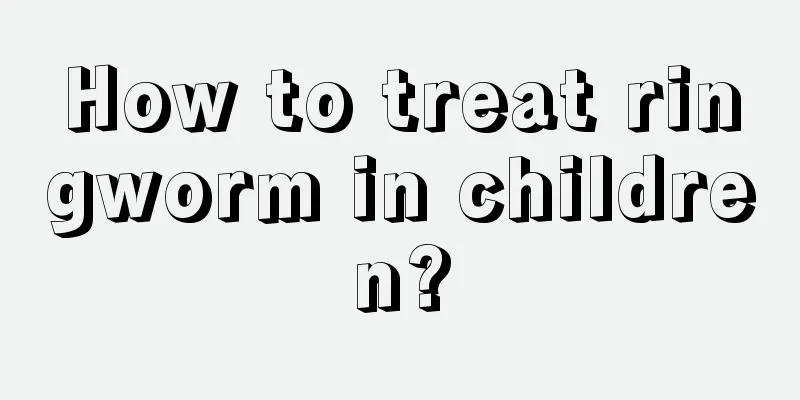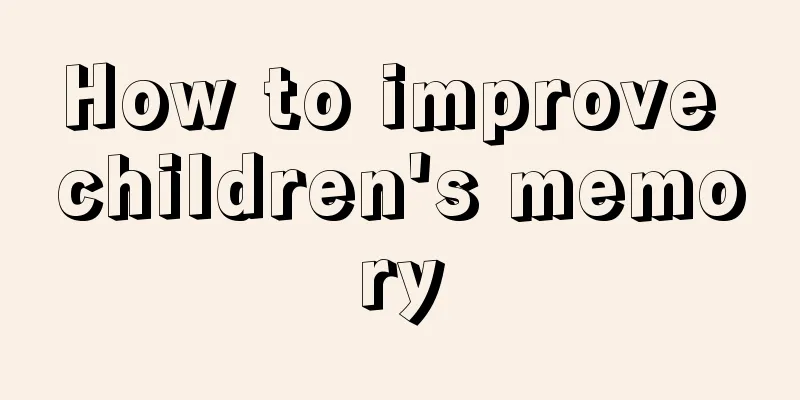What should I do if my baby has no hair on the top of his head?

|
After a baby is born, the hair on the top of his head is relatively sparse, but when the baby is two years old, the top of his head still has no hair. At this time, parents will be very worried, fearing that their child will become bald, so they will take their children everywhere to seek medical treatment. So what is the reason why children do not grow hair on the top of their heads? In fact, this symptom is a relatively common disease called pillow baldness. The occurrence of this symptom is mainly related to the pillow used by the child when sleeping. So the editor will give you a detailed introduction on what to do if your baby does not grow hair on the top of his head. Understanding Pillow Baldness In fact, the area where hair doesn't grow is called pillow baldness, and as the name suggests, it is related to the pillow. The baby's occipital area, where the head touches the pillow, has a circle of sparse or no hair. Most babies' bald spots appear on the back of their heads, while some babies like to sleep on their sides, so they have unilateral bald spots on the back of their heads. What to do if baby has baldness on the pillow 1. When choosing a pillow, don’t choose one that is too hard for your baby. When your baby keeps shaking his head, you should touch the back of his head to see if he is sweating, and hug him frequently. If your baby can roll over, let him practice rolling over and crawling more. 2. Occipital baldness is also one of the common symptoms of rickets. However, occipital baldness is not the main symptom of rickets. In the early stages of rickets, the main symptom in babies is excessive sweating. It is common to sweat all night long in large amounts, and sometimes even have a sour and smelly odor (if sweating gradually disappears 1 to 2 hours after falling asleep, it can be regarded as normal physiological). In addition to baldness on the back of the head and sweating, rickets also presents signs of local bone deformation, such as softening of the skull, eversion of the chest ribs, and deformation of the leg bones. Rickets can cause baldness on the occipital area, but baldness on the occipital area is not necessarily caused by rickets. If your baby has been taking appropriate amounts of vitamin D or calcium supplements and has no other symptoms of rickets, the cause of rickets can be ruled out. Occipital baldness is mostly a normal phenomenon in the baby's normal growth process. It does not require special care and will heal as the baby grows up. The above is a detailed introduction on how to deal with the problem of baby’s hair not growing on the top of his head. At this point, the editor has reason to believe that everyone has a clear understanding of the causes and treatments of baby’s hair not growing. Children are our future, the future of this country and this society, so once the child has any abnormalities, parents will be very worried. However, we must pay attention here that no matter what problems the child has, he must be sent to the hospital for examination and treatment as soon as possible, because this will allow the baby to recover faster. |
<<: How to improve the slow hair growth of a two-month-old baby?
>>: What to do if your baby always has phlegm in his throat
Recommend
What are the early symptoms of tuberculosis in children?
In fact, children are also very likely to suffer ...
What are the benefits of swimming for newborns?
Many parents like to let their newborns go swimmi...
How to treat children's vomiting and fever?
Children are prone to not paying attention to the...
What's wrong with the child who can't breathe?
When children are very young, they usually expres...
Three month old baby always bites his lips
Many parents are very distressed that their three...
What to do if children have a morning cough
In autumn, people are always prone to lung heat, ...
Molluscum contagiosum in children can heal on its own
Molluscum contagiosum is more likely to occur in ...
Reasons why babies wake up in the middle of the night
When babies wake up in the middle of the night, w...
Nine-month-old baby early education method
When the baby reaches the ninth month, he has alr...
At what age do children start to grow teeth
As children grow up, parents are more concerned a...
What to do if teeth grow backwards
During the process of tooth growth, we often enco...
Why do children not grow meat?
Parents are very concerned about their baby's...
How to quickly relieve toothache in children?
Children are very important to every family, but ...
How to remove baby non-pigmented moles?
Many children have been found to have some birthm...
If a child gets a burn and blisters, will it leave scars?
We all know that children are curious about many ...









